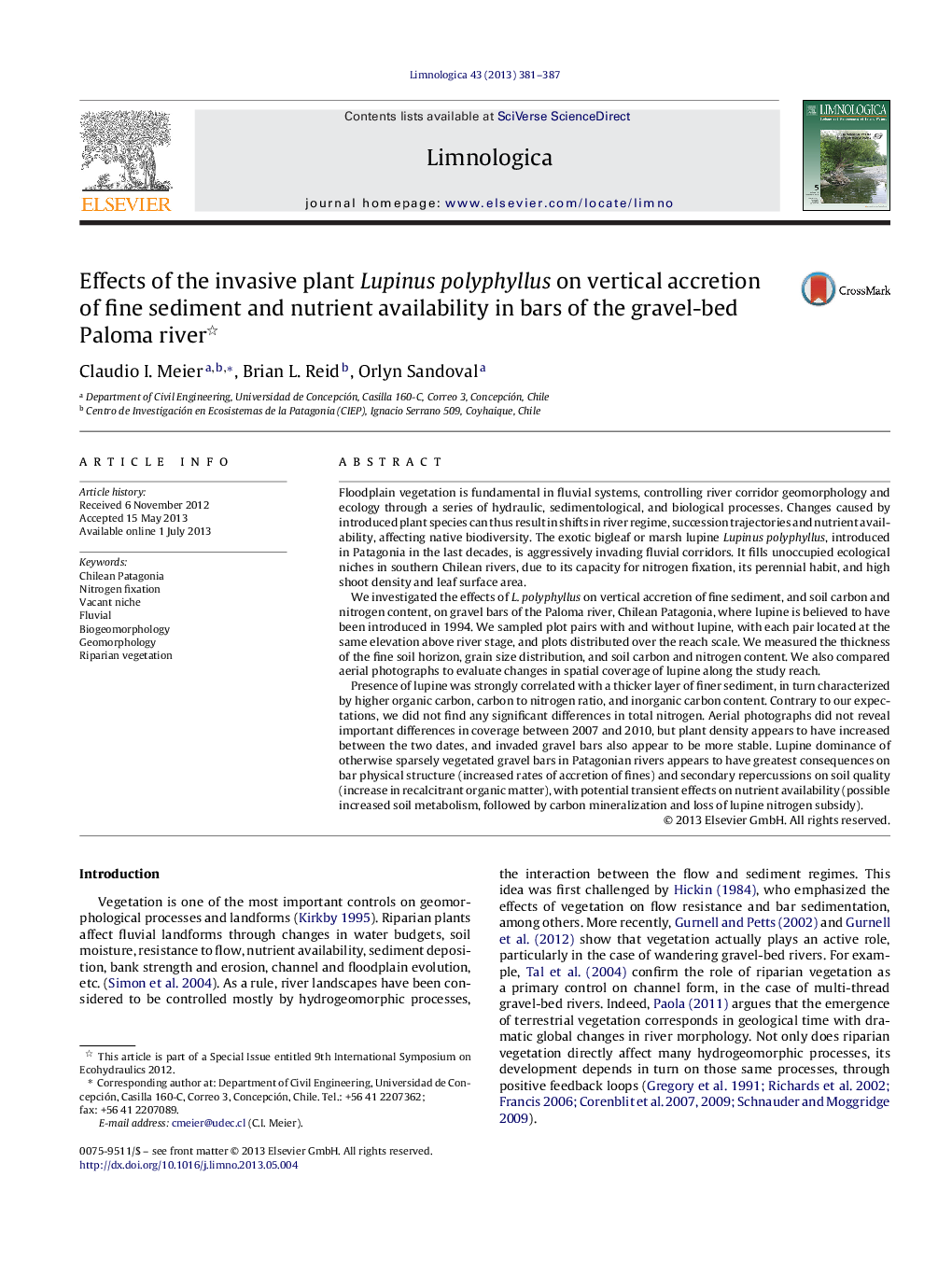| Article ID | Journal | Published Year | Pages | File Type |
|---|---|---|---|---|
| 6305658 | Limnologica - Ecology and Management of Inland Waters | 2013 | 7 Pages |
Abstract
Presence of lupine was strongly correlated with a thicker layer of finer sediment, in turn characterized by higher organic carbon, carbon to nitrogen ratio, and inorganic carbon content. Contrary to our expectations, we did not find any significant differences in total nitrogen. Aerial photographs did not reveal important differences in coverage between 2007 and 2010, but plant density appears to have increased between the two dates, and invaded gravel bars also appear to be more stable. Lupine dominance of otherwise sparsely vegetated gravel bars in Patagonian rivers appears to have greatest consequences on bar physical structure (increased rates of accretion of fines) and secondary repercussions on soil quality (increase in recalcitrant organic matter), with potential transient effects on nutrient availability (possible increased soil metabolism, followed by carbon mineralization and loss of lupine nitrogen subsidy).
Related Topics
Life Sciences
Agricultural and Biological Sciences
Aquatic Science
Authors
Claudio I. Meier, Brian L. Reid, Orlyn Sandoval,
